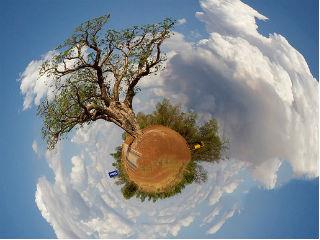No matter who you are or where you are from, your health is sacred. It’s the ultimate key as it opens the door to all else in our lives

While taking an individual approach to extending and saving lives is effective, think about what a dramatic impact we can make by casting a bigger net and creating a culture of health. This means designing infrastructures so “the healthy choice is the easy choice”. For instance, nations can prioritize creating or maintaining safe spaces for exercise, low-cost options to purchase healthy foods, and clean-air laws that protect people from the dangers of secondhand smoke. It doesn’t even have to be an entire nation. It could happen in a company or in a neighbourhood. Every little bit helps.
by
Nancy Brown*
In every nation, regardless of economic status, improving quality of life and increasing longevity are common threads that tie us all together.
Knowing that far too many people in far too many places lack basic resources like shelter and food, it’s essential to protect our diverse populations from the devastating impact of preventable illnesses.
The problem
Cardiovascular disease, cancer, diabetes and chronic respiratory disease are all noncommunicable diseases. Together they are the world’s leading cause of preventable death, and represent the defining global health crisis of our generation.
In 1990, about 40% of deaths from noncommunicable diseases were in developing countries, compared with about 75% today. This surge can be traced largely to four areas: tobacco use, harmful use of alcohol, insufficient physical activity, and unhealthy diet/obesity.
Each year, 38 million people die from noncommunicable diseases globally, and almost-three quarters of these deaths occur in low- and middle-income countries. In addition, these health threats carry an economic burden of increased medical costs and lost wages that continues to climb. A 2011 report of the World Economic Forum estimated that noncommunicable diseases could cost the world a cumulative output loss of $47 trillion by 2030. Of course, this doesn’t even begin to factor in the emotional toll on family and friends – the children left without parents, the students left without teachers, the businesses left without leaders.
What can be done?
We all have an obligation to help people control their risk factors. It’s more straightforward than you may think. A 2015 study in the American Journal of Preventive Medicine concluded that chronic conditions such as heart disease, stroke, high blood pressure, diabetes, obesity and cancer could be cut by at least in half if people adopted healthy lifestyles such as regular exercise, diets low in sodium and added sugars, and abstained from using tobacco. Adopting healthy lifestyles however, doesn’t happen overnight. There is science behind why people change, as each person is inspired and motivated by varying emotional and life factors.
While taking an individual approach to extending and saving lives is effective, think about what a dramatic impact we can make by casting a bigger net and creating a culture of health. This means designing infrastructures so “the healthy choice is the easy choice”. For instance, nations can prioritize creating or maintaining safe spaces for exercise, low-cost options to purchase healthy foods, and clean-air laws that protect people from the dangers of secondhand smoke. It doesn’t even have to be an entire nation. It could happen in a company or in a neighbourhood. Every little bit helps.
Effective prevention also means understanding the unique risk profiles based on race or ethnicity. For example, in the United States, African Americans have a high prevalence of hypertension, a key risk factor for stroke, and not surprisingly, stroke rates are much higher among African Americans. Where you live (whether it’s part of a culture of health or not) can also make a big difference; we’ve seen life expectancy differ by more than 20 years for people living just 5 miles apart.
There are many more ideas and many more potential solutions. The key is working together. BY doing so, we can create a world that is healthier. And all manner of prosperity is sure to follow.
*Chief Executive Officer, American Heart Association
**First published in www.weforum.org

